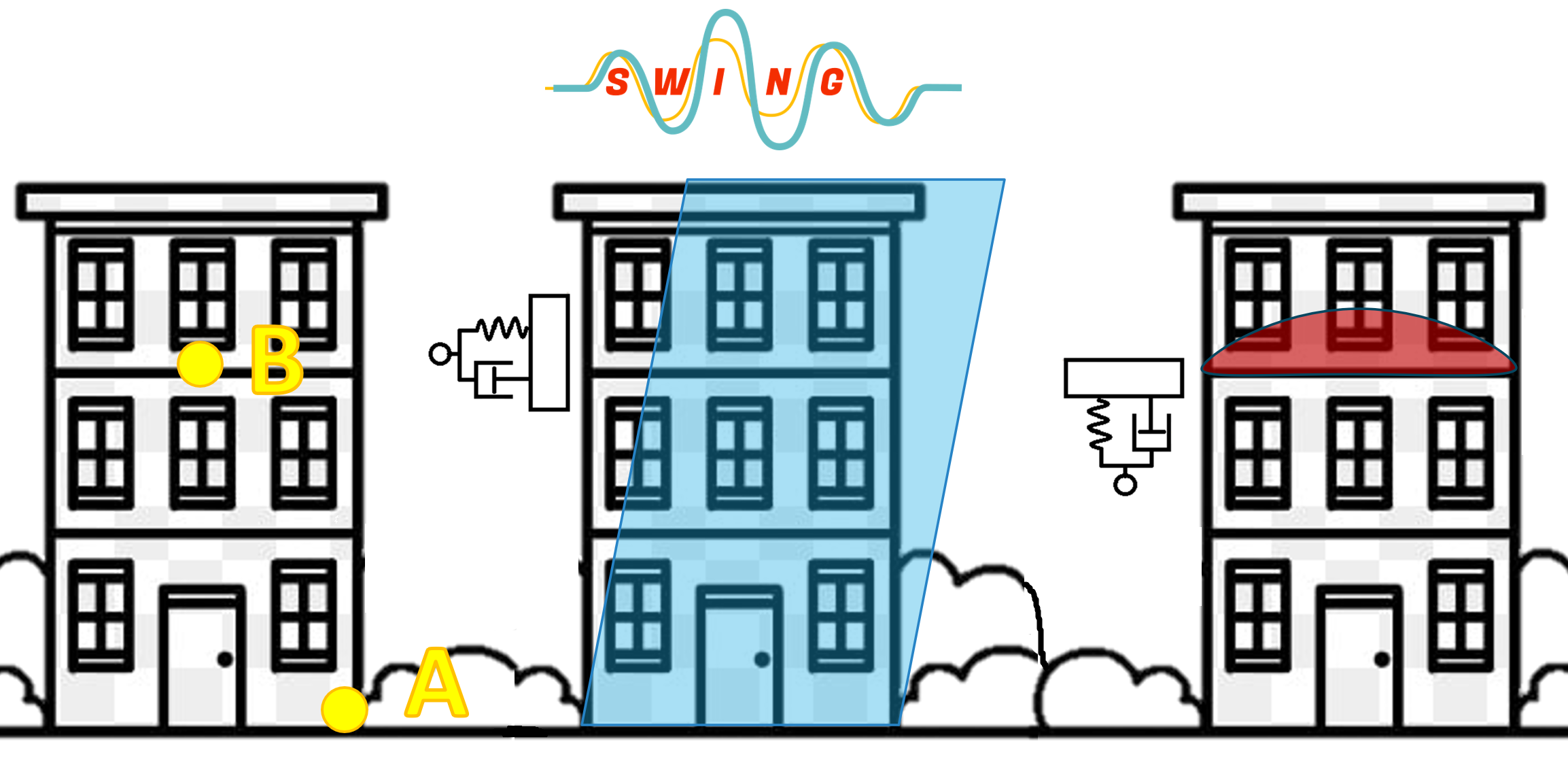
SWING is MoHo’s software for calculating response spectra and handling related problems.
SWING can solve input-output problems. Given an input motion to a harmonic oscillator of known eigen-period and damping, SWING will calculate the expected output motion.
SWING can perform this calculation for structures with different periods, thus providing the response spectrum.
SWING linearizes the response spectra.
SWING can work in conjunction with Vibrì to estimate vibrations on structures that do not yet exist.

What is it?
SWING is structured into 3 modules:
- In the first module, SWING accepts as input time series in acceleration (or data that will be converted to acceleration) and outputs the same time series after convolution with harmonic oscillators of adjustable eigen-frequency and damping. Imagining the input as motion at the base of a structure (oscillator), SWING will output the motion experienced at the top of the structure. The input motion can be a seismic waveform, ambient noise or other signals.
- In the second module, SWING repeats the operation of the first module for oscillators of any period, thus generating a response spectrum for each input motion provided.
- In the third module, SWING averages the response spectra obtained in step 2) or loaded by the user and regularizes (or linearizes or normalizes) them according to the requirements of national building codes.
What is it meant for?
SWING can be used to predict the vibrations experienced at the top of a structure, given the input vibrations at the base, and the estimated (if the structure has yet to be built) or measured (if the structure exists) eigen-period and damping of the structure.
In this sense, SWING can accept input data from Vibrì and return output data that can be analyzed again in Vibrì.
For example, let us imagine an area near a railroad, where a building is to be constructed for hotel use. The requirement is to verify that the vibrations at the top of the hotel do not exceed threshold values considered disturbing to people.
The vibrations will then be measured at the base (with Tromino or Suricat) and through SWING they will be modeled at the top of the structure.
These will be analyzed with Vibrì to assess their impact on people.


